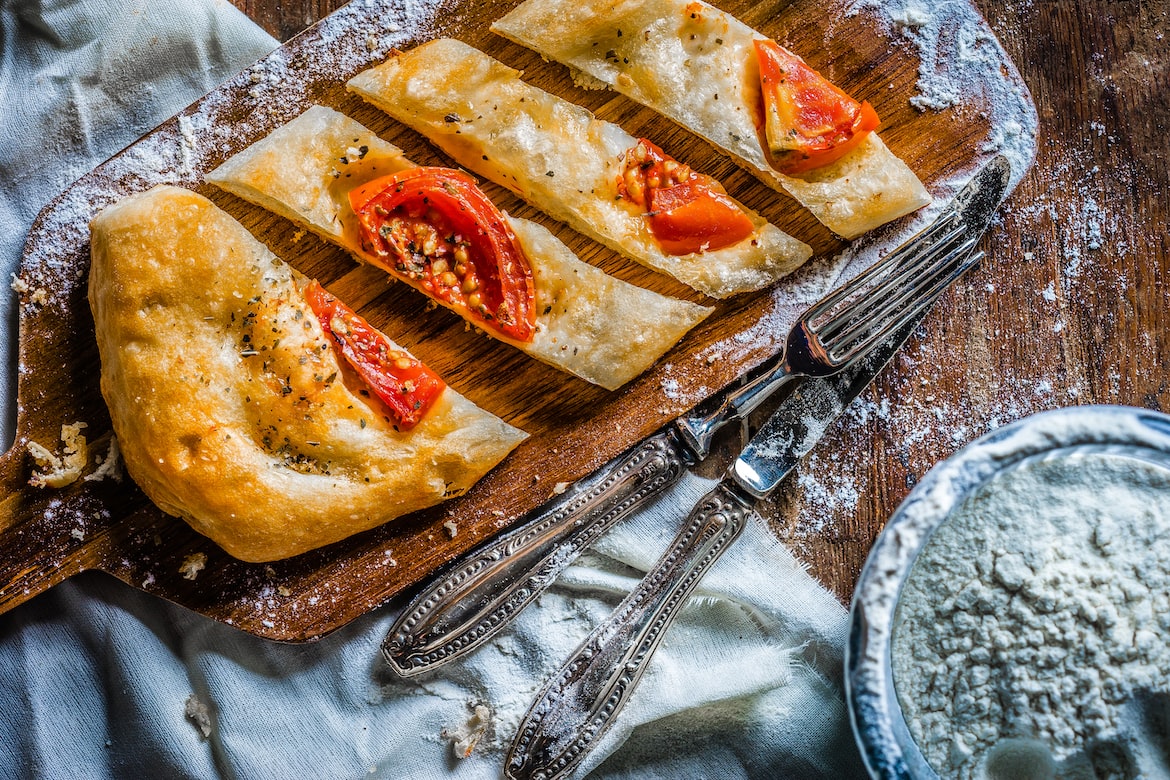Pizza is a beloved dish around the world, and while many focus on the toppings, the bread used to make the crust plays a crucial role. In this article, we’ll explore the debate between using French or Italian bread for pizza.
From flavor profiles and crust texture to regional variations and cultural significance, we’ll provide a comprehensive overview of why the type of bread used in pizza matters.
Let’s start with the basics. Why does the type of bread used in pizza matter? Well, for starters, the bread provides a sturdy base for the toppings to sit on.
It also adds flavor and texture to the overall dish.
French and Italian breads are particularly popular choices for pizza due to their unique characteristics. French bread, also known as baguette, is long and slender with a crispy crust and soft interior.
Italian bread, on the other hand, is often denser and has a thicker crust. Both breads have a rich history in their respective countries, and their use for pizza has only added to their popularity.
Flavor Profile
When it comes to flavor, French and Italian breads have distinct differences. French bread has a mild, slightly sweet taste with a subtle tanginess from the fermentation process.
Italian bread, on the other hand, has a heartier flavor with notes of olive oil and herbs. When used for pizza, French bread can provide a light and crispy base that won’t overpower delicate toppings like fresh mozzarella and basil.
Italian bread, on the other hand, can hold up well to more robust toppings like spicy sausage, peppers, and onions. Ultimately, the choice of bread comes down to personal preference and the types of toppings being used.
Crust Texture
The crust is arguably one of the most important parts of a pizza.
French bread crusts are typically thin and crispy, providing a satisfying crunch with each bite. Italian bread crusts can range from chewy to crispy, depending on the recipe and preparation method.
The texture of the crust can greatly impact the overall eating experience, and it’s worth considering when choosing between French and Italian bread for pizza.
If you prefer a crispy crust that holds up well to toppings, French bread may be the better choice. If you prefer a chewy, more substantial crust, Italian bread may be the way to go.
Dough Preparation
The way the dough is prepared can greatly impact the flavor and texture of the bread used for pizza.
French bread dough is typically made with flour, water, yeast, and salt, and is often left to ferment for an extended period. This fermentation process helps develop the bread’s flavor and texture.
Italian bread dough, on the other hand, often includes ingredients like olive oil and sugar, which can affect the dough’s elasticity and rise.
When used for pizza, the differences in dough preparation can impact the flavor and texture of the final product. It’s important to use the right dough for the type of bread being used to ensure optimal results.
Regional Variations
France and Italy are both known for their unique regional variations of bread. For example, in France, there is pain de campagne, which is a rustic, country-style bread that can be used for pizza.
In Italy, there are various types of breads used for pizza, depending on the region. For example, the Neapolitan pizza is traditionally made with dough that is left to rise for an extended period and is then baked quickly at high temperatures.
Regional variations of bread can add an extra layer of authenticity to a pizza recipe and can provide unique flavor profiles to explore.
Nutritional Information
When it comes to nutritional content, French and Italian breads have some differences to consider.
French bread is typically made with white flour, which can lead to a higher glycemic index and blood sugar spikes. Italian bread, on the other hand, often includes whole wheat flour, which can provide more fiber and nutrients.
When making pizza, it’s worth considering the nutritional content of the bread being used and exploring healthier alternatives if desired.
Accessibility
Depending on where you live, French and Italian breads may be more or less accessible. French bread can be found in most bakeries and grocery stores, while Italian bread may be more prevalent in certain regions or markets.
If neither bread is readily available, there are alternatives to consider, such as sourdough bread or even naan bread, which can be used as a base for pizza.
Cultural Significance
Both French and Italian breads have deep cultural significance in their respective countries. French bread is often associated with baguettes and croissants, while Italian bread is a staple in everything from sandwiches to pasta dishes.
Using these breads for pizza can add an extra layer of cultural significance to the dish and can provide a fun way to explore different cultures and cuisines.
Versatility
While French and Italian breads are popular choices for pizza, they can also be used in a variety of other dishes. French bread can be used for everything from garlic bread to French toast, while Italian bread can be used for bruschetta, sandwiches, and even dipping in olive oil.
The versatility of these breads makes them a great addition to any pantry.
Conclusion
So, which bread is better for pizza? The answer ultimately comes down to personal preference and the types of toppings being used.
French bread provides a light and crispy base that won’t overwhelm delicate toppings, while Italian bread can hold up well to heartier toppings. Both breads have their own unique flavor profiles and textures, and it’s worth exploring them both to see which one you like best.
And who knows, maybe you’ll discover a new favorite way to enjoy these traditional breads beyond just pizza.

